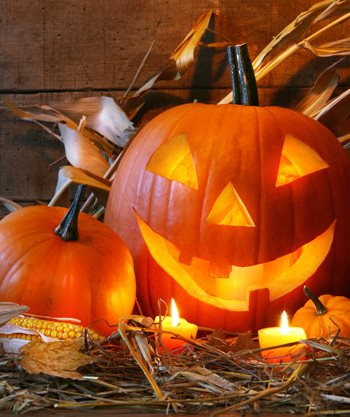Overview
Halloween can be a fun and spooky time for kids and families alike. Children love dressing up as their favorite characters, carving creative jack-o-lanterns, and going trick-or-treating for tasty treats. It is important to remember that there are some dangers associated with all of Halloween’s events. Here are some tips for keeping your Halloween season fun and injury-free.
Pumpkin Carving
- Make sure you do your carving in a tidy and well-lit area. Keep the area and your tools clean and dry.
- Encourage younger children to do activities other than carving. They can decorate their pumpkins with paint, stickers or other creative decorating ideas.
- If older children are carving pumpkins, make sure they use tools designed specifically for carving. This will make things easier and safer. As always, supervise any child using tools that could cause injury.
- Use non-flammable light sources in your jack-o-lanterns. Glow sticks or pumpkin lights are much safer than the open flames of candles.
- In the event of a cut, use a clean cloth to apply pressure and elevate the cut area above the level of the heart. Deeper cuts and cuts that do not stop bleeding after 15 minutes may require professional medical attention.
- In the event of burns, apply cool wet compresses or immerse in cool clean water until pain subsides. Over the counter pain medication and burn ointment may help.
Costumes
- Masks, clothing, and shoes should fit properly and be sturdy to help prevent falls, collisions, and blocked vision.
- Choose flame-resistant costumes and props whenever possible.
- Costume props should be short, soft, and flexible to decrease the chance of accidental injury.
- Costumes with bright colors make it easier to see children in low light conditions. You can add reflective tape to costumes and bags to increase visibility for vehicles.
- Always test face paint and make-up in a small area first. Remove it as soon as you can to avoid skin irritation.
Trick-or-Treating
- Children under the age of 12 should not trick or treat alone. All children should walk in groups. It is best to have a trusted adult along.
- Bring a flashlight to help you see things and to help others see you while walking.
- Try to walk on sidewalks whenever possible.
- Look both ways before crossing the street.
- Remind children to only approach houses that are well lit.
- Never enter a house to receive a treat.
- Carry a cell phone in case of emergencies.
- Only eat treats that are factory wrapped. Throw away any unwrapped or spoiled treats.
- Be aware of neighborhood pets while trick-or-treating, especially ones that might be protective of people approaching their house.
Resources

 POSNA.org
POSNA.org
